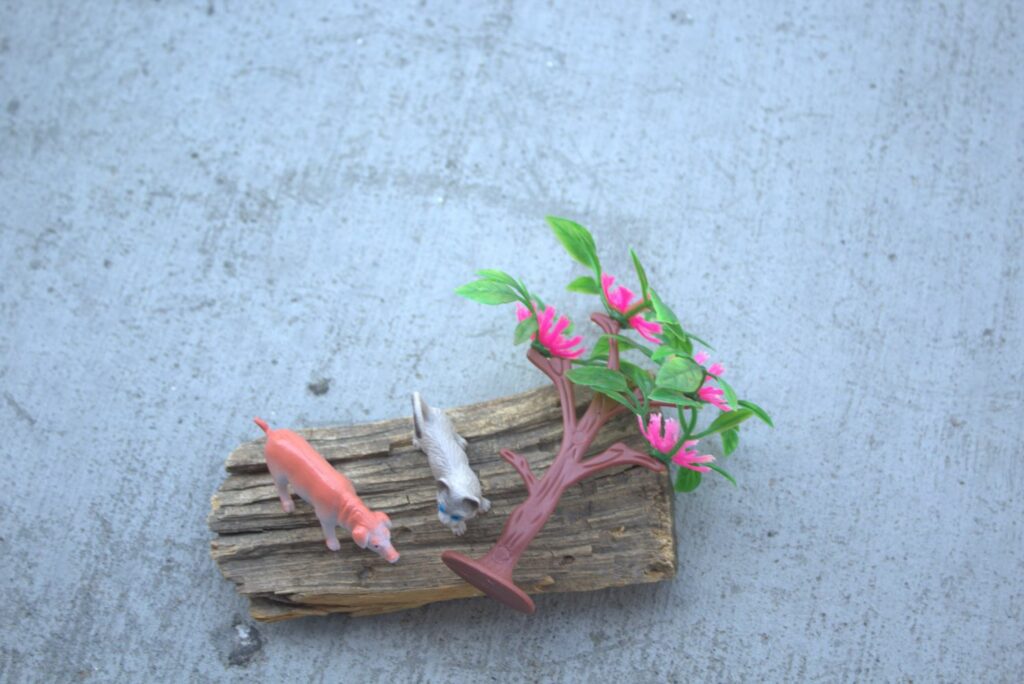English and Digital Media
Introduction
This project emphasized taking risks in our art through poetry, music, art and web production. I learned how to express myself through a variety of mediums, including DSLR Cameras, Tascam Audio Recorders, Adobe Photoshop, Adobe Premiere Pro, Adobe Dreamweaver, Avid Pro Tools, WordPress, and Google Apps.
In English and Digital Media, I valued learning how to communicate better.
Haiku
Our first project in English was to write a haiku. Everyone was given a randomly generated prompt with an emotion and scenario. My concept statement was, “I am exploring the feeling of scorn through the experience of learning history.” After writing the haiku, we had to take a photo for the background which added further meaning to the poem. Then in Digital Media, we turned the photo into a video in Premiere Pro.
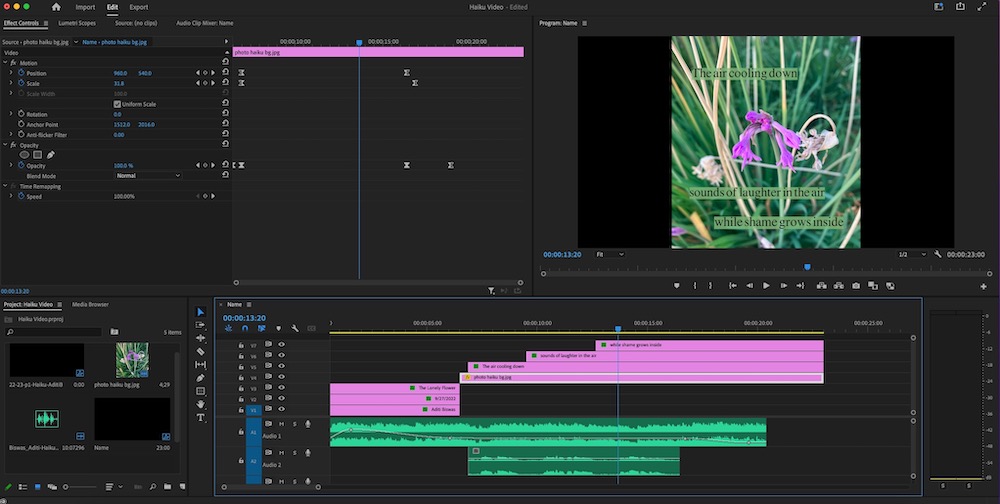
This was a unique project because I had to follow the 5-7-5 syllable structure when writing the haiku. I also had to relate the poem to the conceptual statement, which was challenging because I didn’t know how to relate the two concepts. In Premiere Pro, I struggled with getting the timings of the lines to appear on the screen with the voiceover, but I managed to figure it out. Overall, I’m pretty pleased with the final result and I feel a lot more confident in my poetry writing and video making skills.
Free Verse Poem
Our next major project in English was writing a free verse poem. We analyzed many other poems by writers like Billy Collins and Ada Limón in order to draw inspiration. For my poem, I chose to question the popular superstition about how if you make a wish 11:11, it will come true. Afterwards, in Digital Media, I edited a photo in Photoshop as well as recorded and edited the voiceover in Pro Tools.
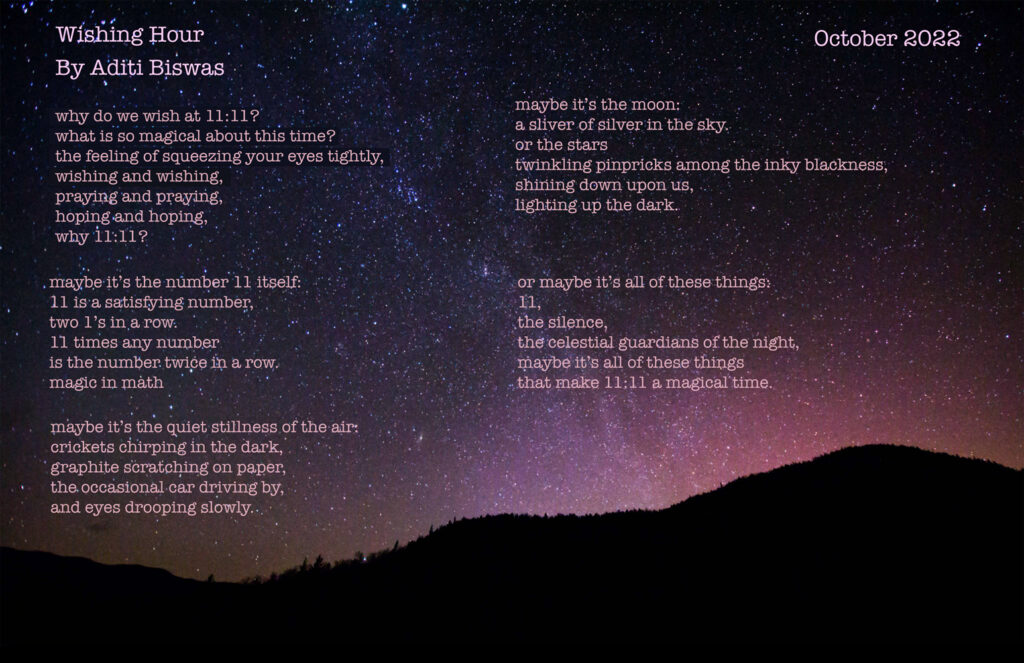
“Wishing Hour” is a free verse poem about why we wish at 11:11, specifically night time. The speaker in this poem is a student who is curious and whose thoughts tend to wander along various topics. In this situation, they are working on homework around 11 pm. Perhaps they are working and notice the time on the clock is 11:11 and start to wonder why people wish then.
In the first stanza, I repeat the question of why we wish at 11:11 at the beginning and end. This repetition represents the speaker’s internal questioning and them trying to figure out the answer throughout the poem. Additionally, in the fourth, fifth, and sixth lines, I repeat the verb in each line twice to add emphasis and show the almost desperation people feel while wishing for something.
In the second stanza, I use repetition of the word “number” because that stanza is about the speaker questioning the number 11 specifically to figure out if that’s why people wish at 11:11. I also use alliteration in the last line when repeating the ma- sound in magic and math.
In the third stanza, I use imagery to show what the speaker is feeling as they are awake at 11:11 at nighttime and working on homework. I mainly focus on auditory images, like the sound of crickets chirping, cars driving by, and pencil writing. There is also consonance in “occasional car” with the repetition of the hard “c” sound. Additionally, in the phrase “eyes drooping slowly”, the two o’s in “drooping” drag out the word like the action of something slowly drooping or falling.
In the fourth stanza, I use rhyme in the phrase “a sliver of silver” which is almost a tongue twister as well. Also, in the last 3 lines, the first word of each line ends with “-ing” which creates a flow as you read “-ing” over and over again.
In order to improve the poem, I read it out loud multiple times and changed the words in different areas in order to make the poem flow more smoothly. I also went back to several places and replaced vague words with more specific words that help contribute to the sense of imagery. I was inspired by the book The BFG when Sophie, the main character, wakes up at 3 am which is described as the witching hour. The author describes the atmosphere using vivid imagery which I really liked so I wanted to do something similar and give a sense of atmosphere to the reader of my poem as well.
Photoshop Blend Modes
One important skill we learned in Photoshop was how to edit photos using blend modes. This allowed us to darken and brighten photos which improved the quality of them. We then practiced this on photos we previously took.
Design
Introduction
Design was one of the classes I looked forward to the most in my day! We learned how to use many different applications like Adobe Photoshop and Adobe Illustrator, as well as important concepts such as the elements and principles of design and color theory. I really valued learning how to see art differently and how to improve my own art.
Alpha Name Photography
In this assignment, we were challenged to take photos of things in our surroundings that looked like alphabet letters and then create our name using those. However, we could not take pictures of actual letters, like signs or logos. I took about 50 photos (10 photos per letter) and organized them into a contact sheet. Then I picked the best photo for each letter, edited it in Photoshop to be black and white, and further edited the photos to add more contrast. I enjoyed this project because it was fun going around the Freestyle campus and looking for letters within shadows or everyday objects. I also enjoyed learning more about Photoshop such how to compile multiple separate images into one.


Conceptual photo
This was our first big project in Design and also an introduction to conceptual art, which is all about ideas, symbols, and themes. Essentially, the concept behind the art is more important than the actual finished art piece.
We used the same concept statement for the haiku we wrote in English, which for me was, “I am exploring the feeling of scorn when learning history.” We had to come up with an object to metaphorically represent each part of the prompt. After a lot of brainstorming and then narrowing down ideas, I chose to photograph a flip phone and mini broom.
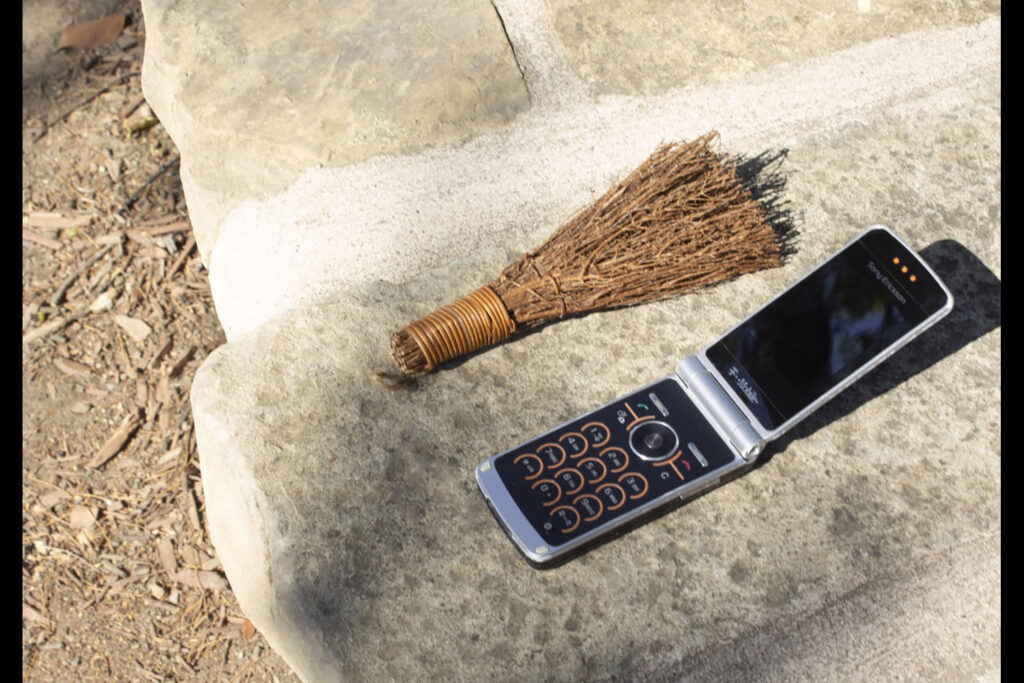
In this photo, the flip phone represents history because it shows the evolution from giant computers taking up a whole room to tiny smartphones you can keep in your pocket. A flip phone falls in between because people can tell it’s old technology but it’s still recognizable. Additionally, I chose to represent scorn through a broom because brooms and other cleaning supplies are associated with people with “lower class” jobs, like custodians or maids. People tend to feel scorn towards those with menial jobs because they believe they are inferior and lacking intelligence. Taking the picture while looking down on the objects helps further emphasize the feeling of looking down upon people. I chose to use a stone bench as the background because stone is rough and weathered as well as associated with time, which connects back to history.
I learnt a lot about photography and editing while doing this project, like different apertures, shutter speeds, and ISO settings. I used a low aperture and high shutter speed to make the background blurry while still keeping the objects in focus. While editing in Photoshop, I started by cropping the photo to fit the rule of thirds. Then, I used the spot healing brush tool to remove the white stains, which I assume was bird poop, from the stone bench in order to make the photo look more clean and professional. I also removed some specks of dust from the screen of the flip phone to help make it more polished. Additionally, I added a warming adjustment layer of 6% to give the overall photo a more vintage look which went along with the theme of history.
Miniature Figure Photography and Photoshop Practice
These were the first assignments we worked on to develop and practice our photography and Photoshop editing skills. We learned the basics of Photoshop, such as how to select something in different ways, add text, add filters, apply adjustment layers, and change or blur the background, to name a few.

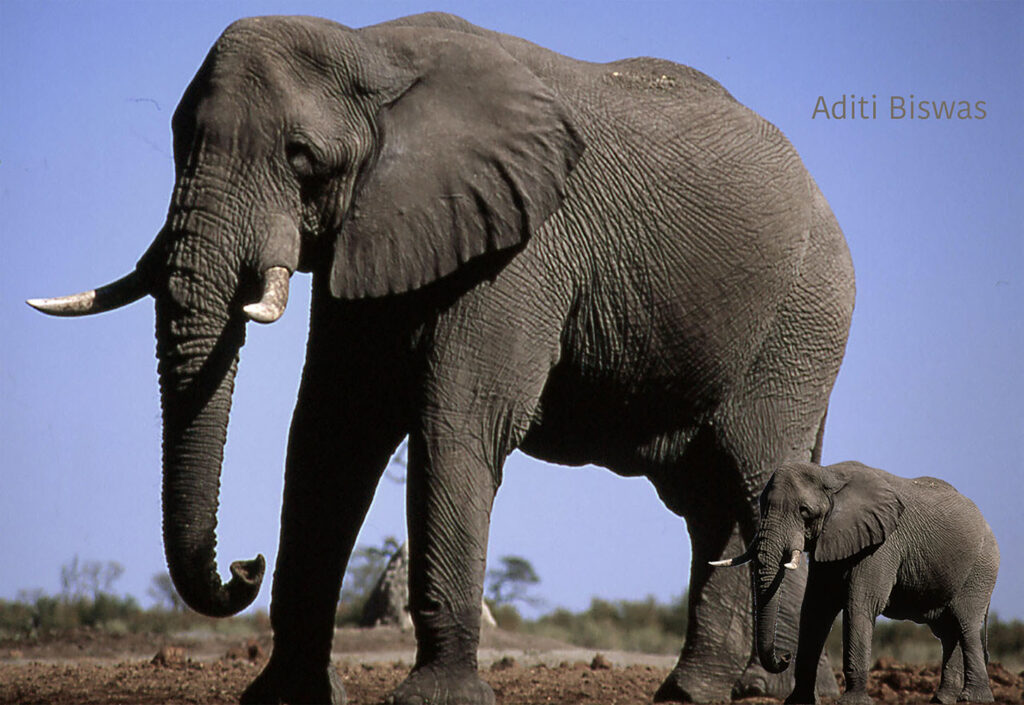
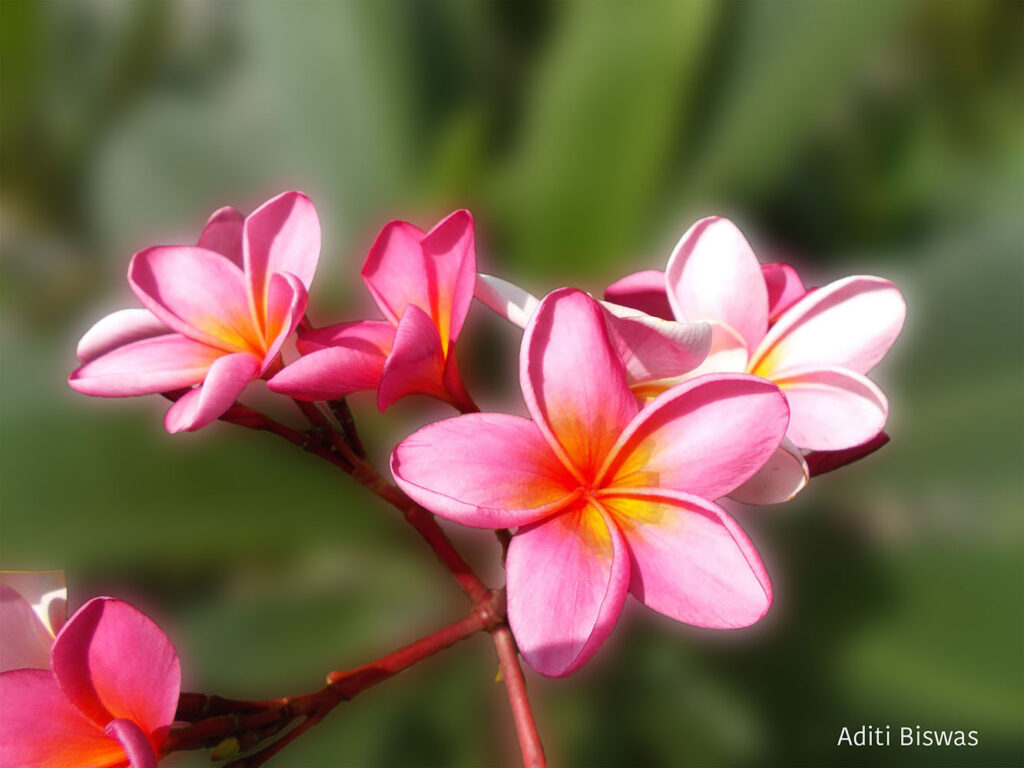
For this next assignment, we picked a few miniature figures of animals and plants and went outside to photograph them in interesting positions. After picking our favorite photo, we edited it in Photoshop.
